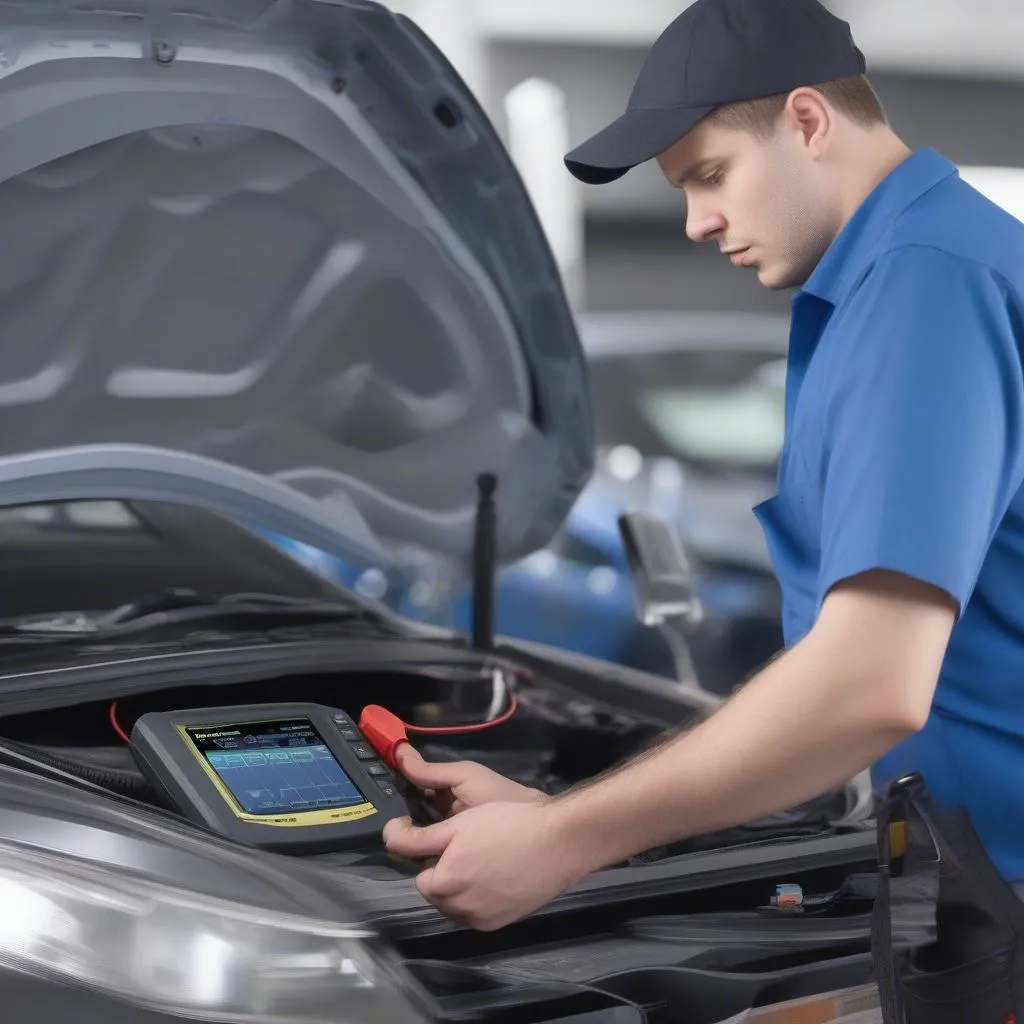Have you ever wondered what those mysterious lights on your dashboard mean? Or maybe you’re curious about how to get the most out of your car’s diagnostic system? Well, you’re in the right place! Today, we’re diving into the world of Obd2 Vehicles.
What are OBD2 Vehicles?
OBD2 stands for On-Board Diagnostics II. It’s a standardized diagnostic system for vehicles that has been required in the United States since 1996 and in many other countries since the late 1990s. Essentially, it’s like a built-in computer that monitors various aspects of your car’s performance and health.
OBD2: More than Just a Diagnostic Tool
Think of it as a window into the heart of your car. OBD2 allows you to access information that’s otherwise hidden, giving you a glimpse into how your engine is running, fuel consumption, and any potential problems. OBD2 is more than just a diagnostic tool; it’s a vital part of modern car maintenance.
The Importance of OBD2 Technology
OBD2 has revolutionized the way we approach car repair and maintenance. Here’s why it’s so important:
Easier Troubleshooting
Before OBD2, mechanics relied heavily on their experience and intuition to diagnose problems. OBD2 provides detailed data about your car’s systems, making troubleshooting much easier and faster.
Improved Fuel Efficiency
OBD2 monitors fuel consumption and can help you identify potential issues that might be causing your car to guzzle gas. By addressing these issues, you can improve fuel efficiency and save money at the pump.
Safer Driving
OBD2 can alert you to potential safety issues, such as problems with the brakes or steering system. This early warning system can help you avoid accidents and keep you safe on the road.
Reduced Emissions
OBD2 monitors emissions and helps ensure your car is meeting regulatory standards. This is important for maintaining air quality and protecting the environment.
How OBD2 Works
OBD2 systems use a standardized connector called the Data Link Connector (DLC), typically located under the dashboard. You can connect a diagnostic tool or a smartphone app to the DLC to retrieve data from your car’s computer.
Using OBD2 for Your Car
What You Can Access with OBD2
OBD2 gives you access to a wealth of information about your car, including:
- Engine codes: These codes indicate any problems with the engine, transmission, or other systems.
- Fuel consumption: Track your fuel usage and identify any potential issues affecting fuel efficiency.
- Vehicle speed: This data can help you monitor your driving habits and improve fuel economy.
- Engine RPM: Keep track of your engine’s speed and identify any potential problems.
- Engine load: Understand how much your engine is working and identify potential issues.
- Transmission temperature: Monitor the temperature of your transmission and identify any potential problems.
Getting Started with OBD2
If you’re interested in using OBD2 for your car, here are a few ways to get started:
- Use a Diagnostic Tool: There are a wide variety of OBD2 diagnostic tools available, ranging from basic code readers to advanced scanners. These tools provide a more detailed look at your car’s data.
 OBD2 Scanner
OBD2 Scanner - Download a Smartphone App: Many apps are available that can connect to your car’s OBD2 port and provide basic diagnostic information. These apps are often more affordable than dedicated scanners.
Frequently Asked Questions About OBD2 Vehicles
Q: What is the difference between OBD1 and OBD2?
A: OBD1 is the earlier version of the diagnostic system, introduced in 1991. OBD2 is the newer version, and it offers more detailed data and compatibility across a wider range of vehicles.
Q: Do all cars have OBD2?
A: Yes, all vehicles manufactured in the United States since 1996 and in many other countries since the late 1990s are required to have OBD2.
Q: How do I know if my car is OBD2 compliant?
A: You can check the Vehicle Identification Number (VIN) of your car, which will list the year of manufacture. If it’s 1996 or later, your car is OBD2 compliant. You can also check for a 16-pin data link connector (DLC) under your dashboard.
Q: Can I use OBD2 to fix my car myself?
A: While OBD2 can help you identify potential problems, it’s usually best to take your car to a qualified mechanic for diagnosis and repairs.
Q: What if I need help using OBD2?
A: Diag XCar is here to help! We offer a wide range of services, including diagnostics, repair, and even training on how to use OBD2 technology effectively.  OBD2 Training
OBD2 Training
Conclusion
OBD2 technology has dramatically changed the way we interact with our vehicles. By providing detailed information about your car’s performance, OBD2 can help you make informed decisions about maintenance, fuel efficiency, and safety. From troubleshooting engine problems to monitoring fuel consumption, OBD2 is an invaluable tool for any car owner.
If you’re interested in learning more about OBD2 or need help using this technology, reach out to Diag XCar. We’re committed to helping you keep your car running smoothly and safely.
Let us know your thoughts in the comments below! And don’t forget to check out our other articles on the topic of OBD2 vehicles.
Don’t hesitate to contact us at +84767531508 for any assistance you need with OBD2 technology or any car diagnostics. We have experts available 24/7 to help you out.